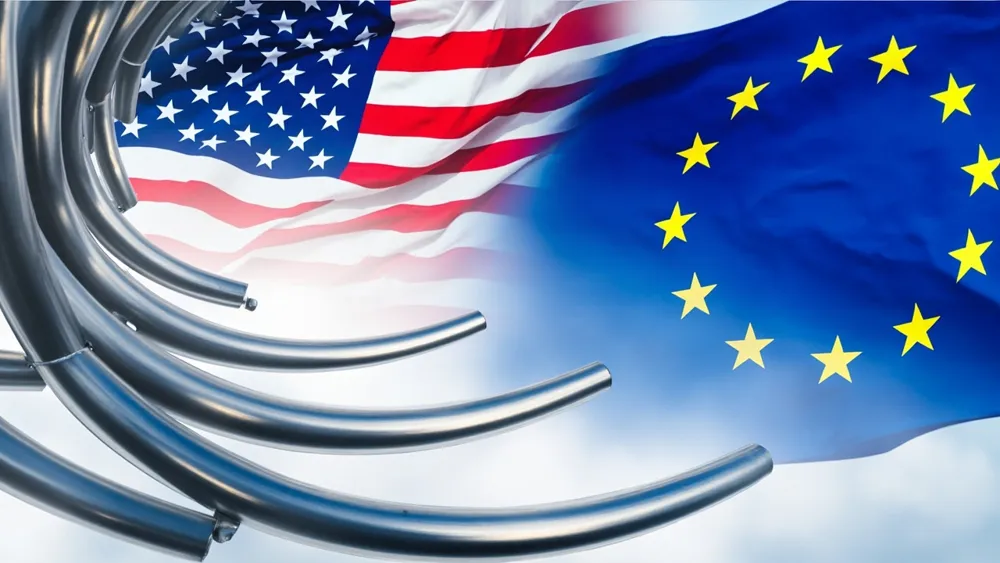Trump's 50% steel tariff may lead to price drops in Europe and spikes in the U.S.

In a surprising turn of events, U.S. President Donald Trump announced a significant hike in tariffs on steel imports from 25% to 50%, scheduled to take effect imminently. This bold move has sent shockwaves through global markets, highlighting the volatility of trade policy and the far-reaching implications it bears on international supply chains. As the economic landscape shifts in response, investors should be cognizant of the dual-edged nature of this tariff, observing how it will not only shape domestic pricing but also redefine market dynamics across continents.
The most immediate impact of this tariff is expected to be felt within the United States, where the cost of steel is projected to soar, consequently inflating prices for industries that are heavily reliant on this raw material. Analysts anticipate a ripple effect leading to increased production costs and, potentially, a squeeze on EBITDA margins across various sectors. Moreover, a commodities analyst at CRU has emphasized the existing disparity in U.S. steel prices compared to international benchmarks, predicting that such tariffs will further exacerbate these trends, potentially stalling economic growth as companies navigate inflated input costs in a recovering post-COVID economy.
Contrastingly, the European steel market may encounter a surprising influx of opportunities amid the U.S. tariff crisis. With steel redirected away from U.S. demand, European manufacturers might find themselves well-positioned to benefit from lower prices, thereby enhancing competitiveness against domestic U.S. producers. For example, European automakers could leverage this scenario to bolster their production of steel-intensive products such as automotive parts, building an export pipeline to the U.S. As such, this development not only raises questions about the sustainability of domestic production in Europe but also prompts stakeholders to reassess perceived assumptions about protectionism and its actual impact on supply chains. Could a short-term price decline in Europe ultimately threaten European suppliers if supply-demand dynamics shift too dramatically?
The broader economic landscape now hinges on potential pushback from Europe, which has already voiced its concerns. The European Union's threat of countermeasures signals a budding tit-for-tat trade battle that could escalate, reminiscent of tariff wars seen during the dot-com bubble and the 2008 financial crisis. Should retaliatory actions come to fruition, the resulting turmoil might not only destabilize steel prices but could also extend to other unrelated sectors, compounding inflationary pressures in both regions.
As we look towards the future, the prospects of this tariff scheme seem uncertain, perhaps transitory given the political environment and lobbying efforts likely to emerge. U.S. manufacturers, who are expected to shoulder the brunt of these tariffs, may advocate for policy adjustments, swaying the administration's approach in a matter of weeks or months. This unpredictability presents both opportunities and risks for investors. An acute understanding of trade policies and an agile investment strategy may be necessary for navigating this fluctuating landscape. Ultimately, one can't help but ponder: Are we witnessing the inception of a broader reevaluation of trade norms, or merely a reaction to immediate geopolitical pressures?
Read These Next

Steel Stocks Soar: What's Next for the Manufacturing Sector?
This commentary analyzes the implications of President Trump's decision to double steel tariffs on the U.S. economy, particularly focusing on the potential benefits for domestic producers and the risks posed to dependent industries.

Company Analysis: Stability in Share Capital and Risks Ahead
Analysis of the company's annual report indicating stability in share capital and potential risks due to lack of activity.

Amazon's pricing controls risk anticompetitive behavior, warns German regulator
This article discusses the warning from German antitrust regulators to Amazon regarding its pricing controls that may hinder competition, focusing on potential impacts on Amazon's pricing strategies and the broader implications for the tech industry.
